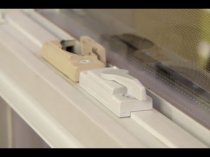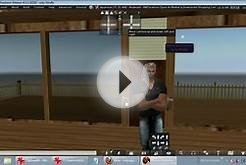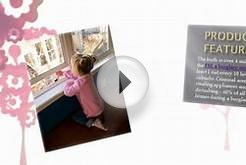Check your door and door frame. Should they be repaired or replaced? All exterior doors should be either metal or solid core wood (1 3/4" thick). Glass or thin wood panels, in or near the door, can be protected by installing polycarbonate glazing and secured with one way screws.
LOCKS
- Use a dead bolt lock with a one-inch throw bolt or a heavy duty drop bolt lock.
- Install a highly pick resistant cylinder.
- Protect the cylinder with a guard plate.
- Use a licensed locksmith.
- Don't use a dual cylinder lock (a lock that has a key in both sides) in a residence. These locks are illegal in multiple dwellings in New York City. Although they offer protection, dual cylinder locks can also trap you in your house during an emergency such as a fire. (Consult the local laws in your community regarding dual cylinder locks).
WINDOWS
Security devices for windows vary, depending on the type of window and its location. All accessible windows in a private house need securing. This includes basement and windows. (Second floor windows can be accessed by ladder, trash cans, nearby trees, garage rooftops, or shrubbery.)
The CRESCENT LATCH found on a double hung window is not an adequate security device. Its function is to keep the upper and lower windows together. Because of its construction a crescent latch will not withstand a simple attack.
The following methods and devices are suggested for securing several types of window openings:
To pin double hung wooden windows: at each top corner of the inside sash, drill a hole through the inside sash and three quarters of the way through the outside sash at a slight downward angle. Insert two 5 1/6 diameter eyebolts, one on each side of the window. The bolts should fit loosely enough in their holes so that they are easy to insert and remove.
A separate set of holes can be drilled into the outside sash approximately three to four inches above the inside sash so that the window can be left open for ventilation. This prevents the window from being opened further than the three or four inches allowed.
(CAUTION: SOME PINNING TECHNIQUES MAY DAMAGE THERMAL PANE SEALS.)
CASEMENT WINDOWS: Commercial locking devices are available for closed casement windows, however, they cannot be secured in an OPEN position. Therefore, do not leave casement windows open and unattended.
LOUVERED (JALOUSIE) OPENING: Should be secured as they offer no resistance to force. Glass panels can be replaced with impact resistant polycarbonate and they can be pinned to the groove by using one-way screws.
BASEMENT WINDOWS: One of the most popular entry ways; secure with grilles or bars that contain a safety latch for inside opening.
SLIDING PATIO DOORS/SLIDING WINDOWS ARE SPECIAL SECURITY PROBLEMS:
Drill a downward sloping hole through the top rail of the sliding door and into, but not through, the top rail of the fixed doors overlap. Insert a pin (or nail) to lock. (Fig. 1) Tighten adjustment screws to prevent lifting door out of channel. (Fig.2)
OTHER SECURITY DEVICES.
LIGHTING . . . . Illuminate the perimeter of your house, especially the door areas with enough light to see a silhouette. Lights that are too bright will hamper viewing. Install the light fixture out of reach, and in a tamper and weather resistant housing.
Use TIMERS throughout the house that have variable time changes, and turn the lights on and off when you are not at home.
Avoid displaying the first names of family members on mailbox.
SHRUBBERY . . . . Should be cut or designed so that it does not obstruct viewing from inside or outside. Keep a clear view to provide maximum visibility and little concealment.
AIR CONDITIONERS . . . . Should be secured to the window opening to prevent being pulled out or pushed in.
WINDOW GATE . . . . On the first floor or on any emergency exit window (fire escape), a gate should be one that has been approved by the New York City Board of Standards and Appeals. (This gate is commonly known as the ''ferry" or "safety" gate and is operated by a latch and not a padlock or combination lock).
GARAGE
Secure an attached garage as you would your dwelling as it is an access point into your house.
Other structures such as an unattached garage, tool shed and storage areas should be locked with high quality security devices that are properly installed.








Not Legal Advice: Using the key would be your best bet! If it's not your house, don't try to enter!
Copyright © · All Rights Reserved · Home | Contact | Sitemap | RSS Feed